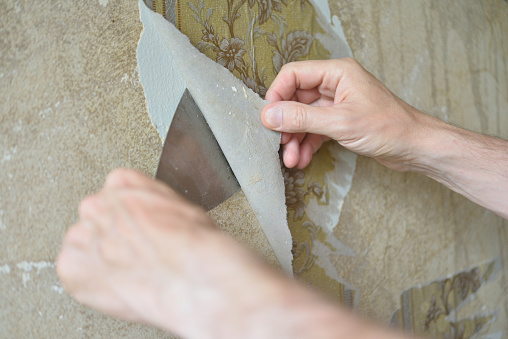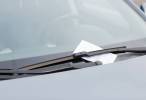Stripping wallpaper: No guarantee it will come off effortlessly
Q: I have a small room with wallpaper that I want to remove. The wallpaper only goes up to a chair rail about waist high, but I’m nervous that the job may get out of hand. How should I approach this task?
A: This is a job filled with uncertainty. The wallpaper may lift off effortlessly, or you may end up needing to retexture the wall.
There are lots of ways to remove wallpaper, ranging from steaming or “ironing” the walls to attacking the paper with chemicals or a variety of household concoctions.
I’m going to focus on the one that has brought me the most success: a stripper and a little elbow grease.
No, fellas, I’m not talking about a stripper you might see at a bachelor party; I’m talking about wallpaper stripper, which contains enzymes that dissolve the old paste.
The paper will likely come off in two pieces. The patterned surface usually peels off first, leaving the paper backing on the wall.
You may get lucky and have the surface and the backing come off in one piece. I rarely get that lucky, but the top should peel away with no problem.
Use a scoring tool (about $8) to cut tiny holes in the wallpaper to allow the enzyme to reach the backing. Be sure to cover anything you don’t want to get damaged, such as the carpet, wood moldings and furniture.
Put light pressure on the scoring tool, then swirl it around on the paper.
After scoring, apply the enzyme, which is concentrated, so follow the instructions carefully. Wear rubber gloves and use either a sponge or a thick nap paint roller to saturate the paper. It’s a good sign if it starts bubbling away from the wall.
Wait about 15 minutes, saturate again, then wait another 15 minutes and peel. Don’t try to remove the paper if it’s dry. Instead, apply more enzyme and then peel.
You will probably need to scrape the backing off some areas of the wall. Don’t use a razor or anything too sharp, or you will damage the wall. Instead, use a 4-inch putty knife to lift up a corner and then peel it off.
You can also push the putty knife along the wall to remove the backing, however, you will have to continue to wet the backing for it to lift off.
Once the backing has been removed, you will be left with dried wallpaper adhesive on the wall. Use a sponge and the enzyme solution to dissolve the adhesive and then wipe it off. Finally, rinse the area with clean, warm water.
Mike Klimek is a licensed contractor and owner of Las Vegas Handyman. Questions may be sent by email to: handymanoflasvegas@msn.com. Or mail to: 4710 W. Dewey Drive, No. 100, Las Vegas, NV 89118. His web address is www.handymanoflasvegas.com.
Do-it-yourself
Project: Removing wallpaper
Cost: Under $40
Time: Half to one day
Difficulty: ★★★




























